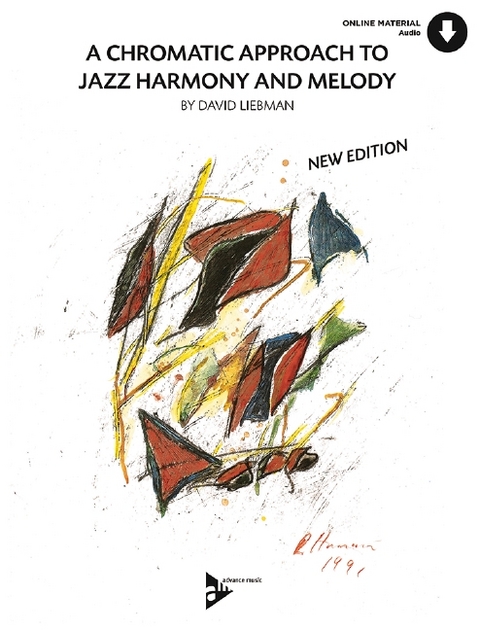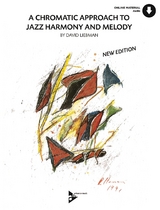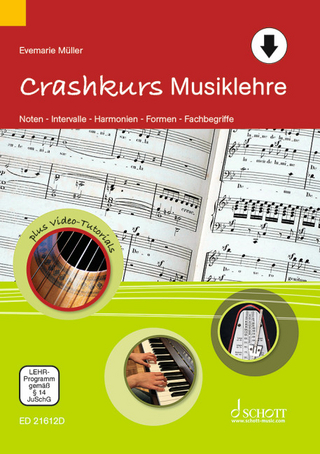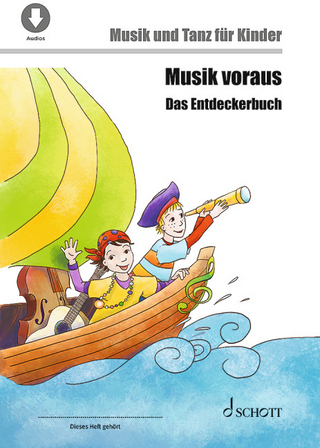A Chromatic Approach To Jazz Harmony And Melody
Melodie-Instrumente. Lehrbuch.
Seiten
This now iconic book describes how the improviser can organize one's approach to enlarging their tonal/non-tonal vocabulary beyond the standard language.Besetzung:Melodie-Instrumente
This book should be seen as a method to help the artist to develop his or her own way when trying to improvise chromatically. Through the concepts and examples offered, the improvisor should be able to use this material alongside already familiar tonal ideas. Specifically, the book serves as a guide for organizing chromaticism into a coherent musical statement meant to satisfy both the intellectual and emotional needs of artistic creation. The reader will be introduced to more than one way of conceiving chromatic lines and harmonies. There is nothing theoretically complex or new in the text, it is the organization of the material as well as many musical examples and transcriptions (Bach, Scriabin, Coltrane, Shorter, Hancock, Beirach, Liebman a.o.) which should serve to inspire musicians to expand their usual diatonic vocabulary. This book also provides insight into the style of playing that David Liebman is known for. In addition the book contains 100 assorted solo lines and 100 chord voicings. More from David Liebman at his homepage.
This book should be seen as a method to help the artist to develop his or her own way when trying to improvise chromatically. Through the concepts and examples offered, the improvisor should be able to use this material alongside already familiar tonal ideas. Specifically, the book serves as a guide for organizing chromaticism into a coherent musical statement meant to satisfy both the intellectual and emotional needs of artistic creation. The reader will be introduced to more than one way of conceiving chromatic lines and harmonies. There is nothing theoretically complex or new in the text, it is the organization of the material as well as many musical examples and transcriptions (Bach, Scriabin, Coltrane, Shorter, Hancock, Beirach, Liebman a.o.) which should serve to inspire musicians to expand their usual diatonic vocabulary. This book also provides insight into the style of playing that David Liebman is known for. In addition the book contains 100 assorted solo lines and 100 chord voicings. More from David Liebman at his homepage.
Part One: Text & Examples - Part Two: Musical Examples
| Erscheint lt. Verlag | 31.5.1991 |
|---|---|
| Sprache | englisch |
| Maße | 231 x 303 mm |
| Gewicht | 872 g |
| Themenwelt | Kunst / Musik / Theater ► Musik ► Musiktheorie / Musiklehre |
| Sozialwissenschaften ► Pädagogik ► Erwachsenenbildung | |
| Schlagworte | Harmonie • Harmonielehre • Improvisation • Jazz • Musikalien Rock/Pop/Jazz • Noten (Musik) |
| ISBN-10 | 3-89221-030-6 / 3892210306 |
| ISBN-13 | 978-3-89221-030-6 / 9783892210306 |
| Zustand | Neuware |
| Informationen gemäß Produktsicherheitsverordnung (GPSR) | |
| Haben Sie eine Frage zum Produkt? |
Mehr entdecken
aus dem Bereich
aus dem Bereich
Noten - Intervalle - Harmonien - Formen - Fachbegriffe
Notenblätter (2023)
Schott Music
17,50 €
Musik und Tanz für Kinder von 6 bis 8 Jahren
Notenblätter (2022)
Schott Music
19,50 €
Musikgeschichte in den Werken ihrer Frauen
Media-Kombination (2024)
Helbling Verlag
53,90 €




